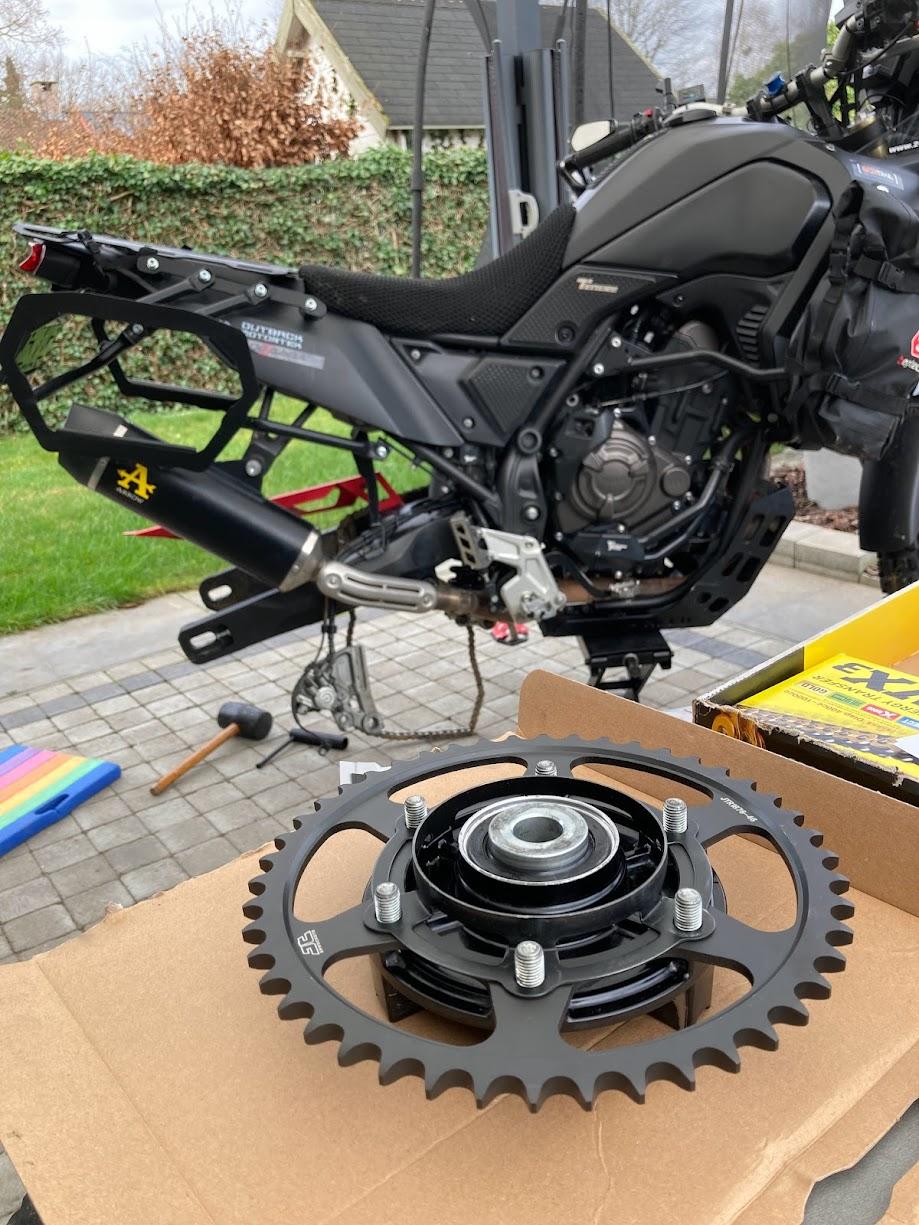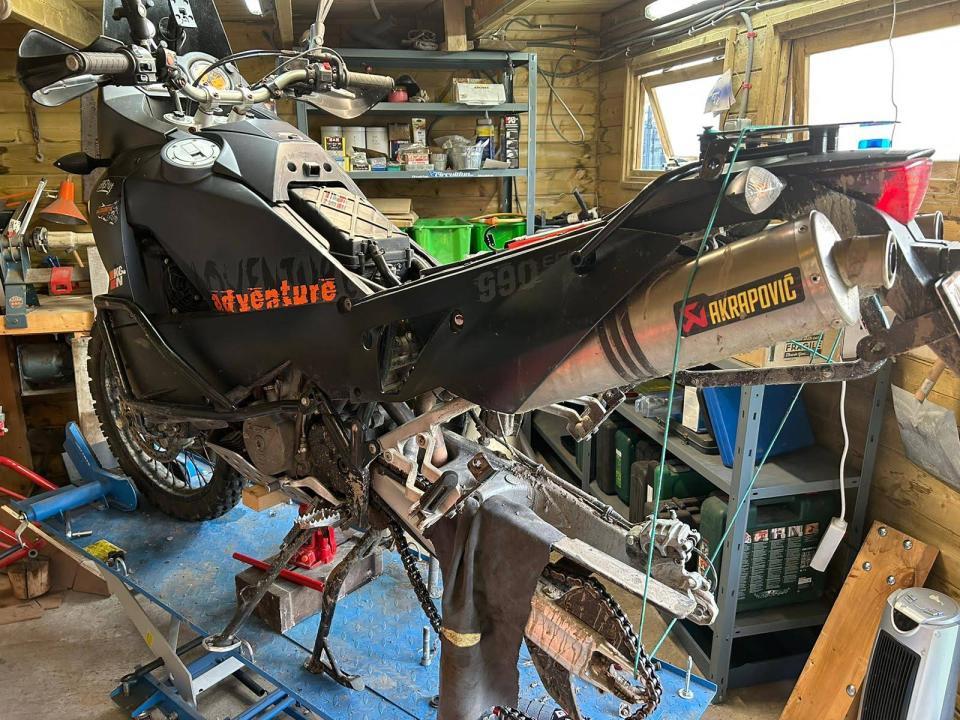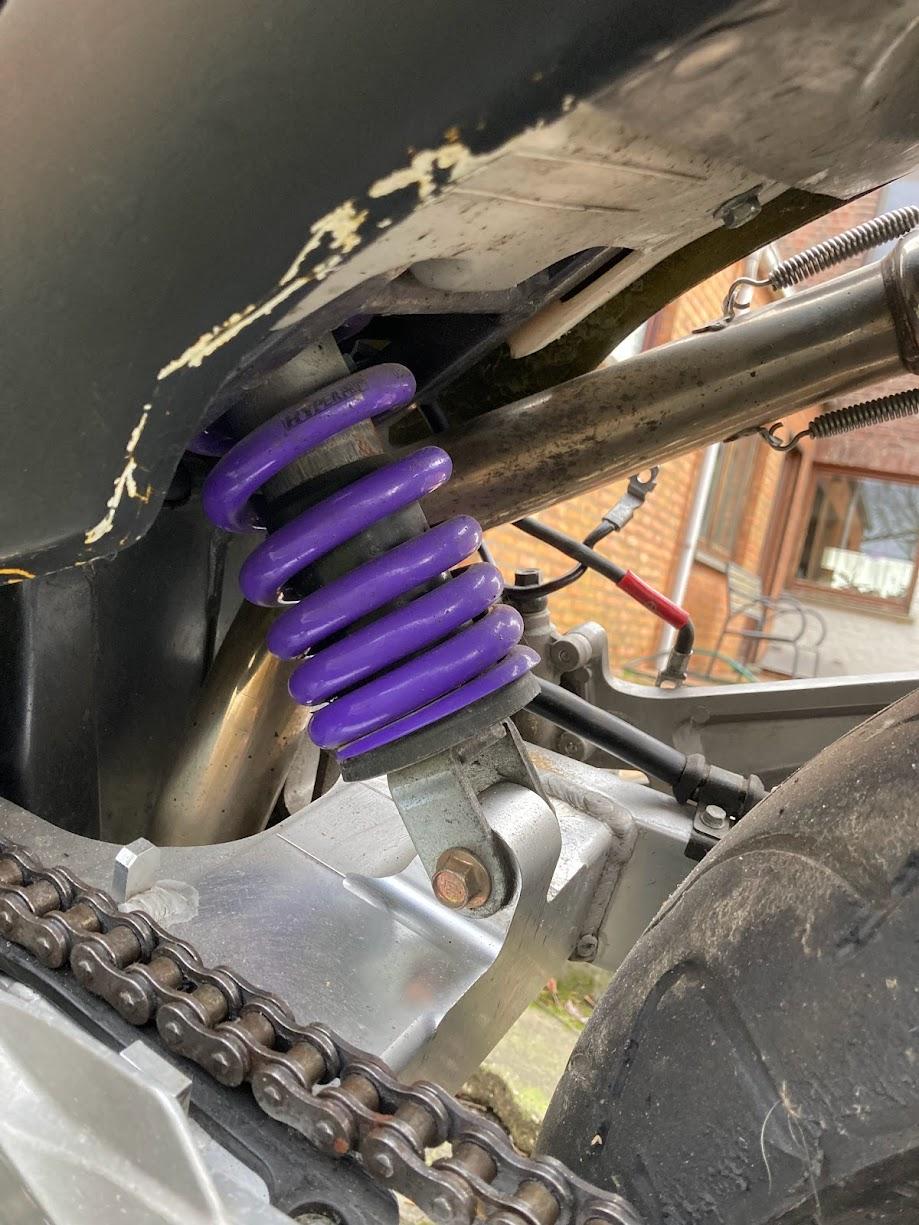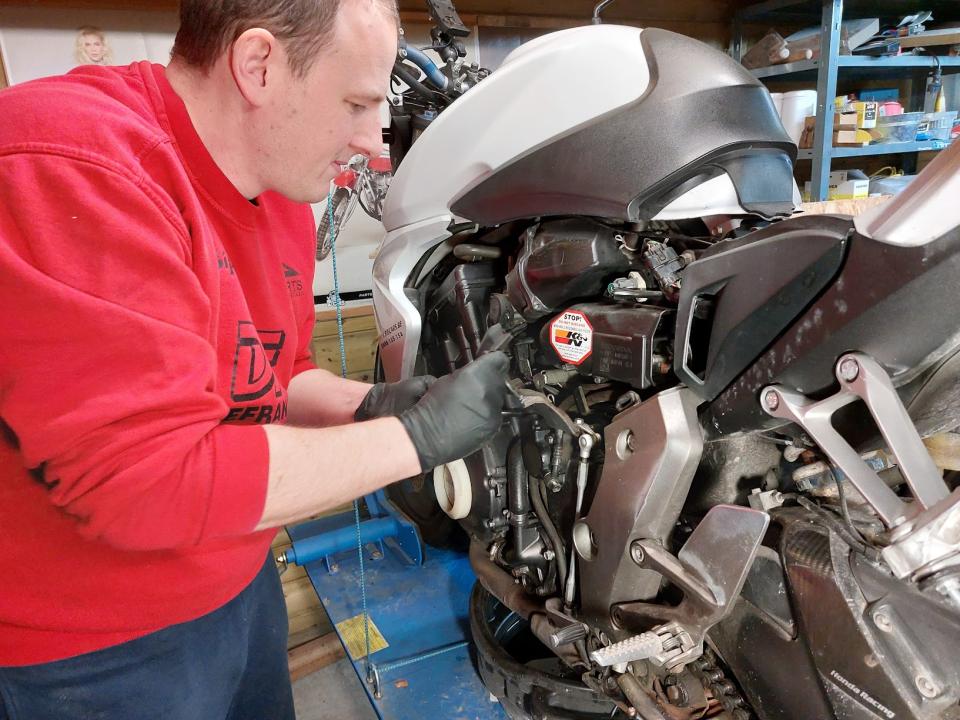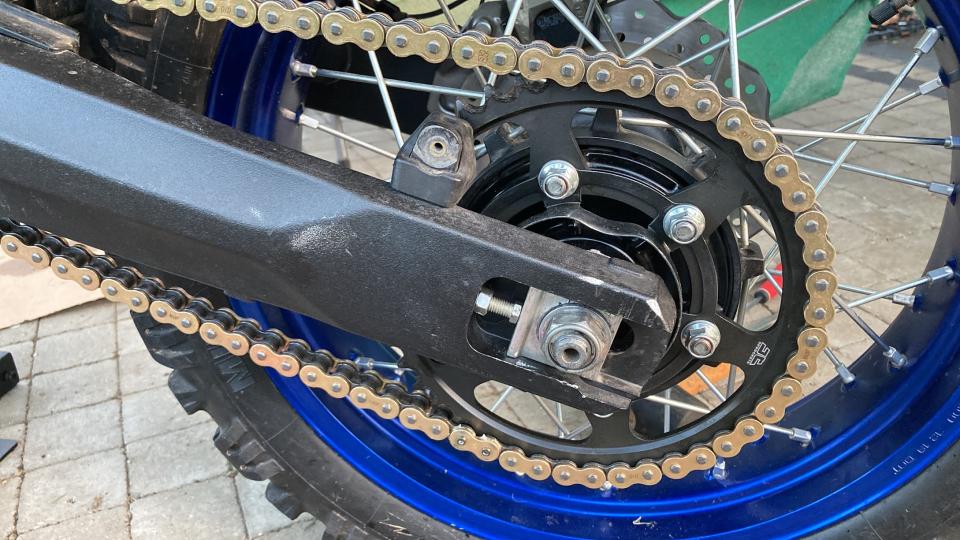Maintaining your motorcycle yourself is easy. And it's fun too! While cleaning you often come across something that you want to tackle. This is how you go about it!
Tyres
The only contact between the motorcycle and the ground is the tires. These need to be in optimal condition to get the grip you want.
You can check the correct tire pressure via Google by searching for 'tyre pressure' and your type of tire.
You can see whether you still have sufficient profile by looking at the wear lugs in the profile of the tire.
If these are flush with the outside of the tire, then it is time for new tires. Don't skimp on this, grip is everything for a motorcycle.
Brakes
You check the braking part at three points. The brake pads, the brake discs and the brake fluid.
Brake pads wear out and are easy to replace. Remove the brake caliper or remove the guide pins and you can easily fish out the brake pads.
Detailed explanation about replacing brake pads. Be sure to check the condition of the brake pads every 3 months and replace them if there is only 2mm of brake lining left.
Brake discs have a minimum thickness that you can find on the disc. Measure the thickness of a disc in the center of the braking area and not with a caliper at the edge.
The brake pads do not touch the very edge of the disc, making it thicker here. So really measure where the brake pads touch the disc.
Measuring with a micrometer is more accurate or drive to a motorcycle dealer where they can check the thickness. If you are close to the minimum thickness, it is advisable to replace the brake discs.
A pricey affair, but safety comes first.
Brake fluid attracts moisture and this is undesirable. Moisture causes oxidation in the braking system, which reduces braking power and causes brake pistons to stick. This causes brake pads to continue to rub against the brake discs, resulting in additional wear. Be sure to change the brake fluid every year or when it has become a coffee-colored fluid. Manual on how to replace your brake fluid.
Battery
Nowadays, motorcycles are equipped with maintenance-free batteries. You don't really have to do any more maintenance than hanging it on the trickle charger in the winter.
Older engines may be equipped with versions with caps on the top. You pour demineralized water here if the liquid level is too low.
Suspension
This really is a neglected item among maintenance items. Both the front and rear suspension are equipped with oil and this must be changed periodically!
You cannot do this yourself unless you are very handy. A suspension specialist is the right person for this.
The front fork is easy to do yourself. With some skill you can remove the old oil from the fork and provide it with clean oil.
Always flush the fork with clean oil to flush out any oil channels and to get as much old oil out of the fork as possible.
A universal manual is not for this, a workshop manual for your engine is a must.
Lights
In addition to your motorcycle maintenance, this is actually more of a check-up tour. Do all the lights around still work? Check the indicators.
Does the brake light still respond to the front and rear brakes? A more difficult job is checking all electrical plugs.
With an old engine, it doesn't hurt to disconnect all connectors, clean them with a contact cleaner and reassemble them with some acid-free Vaseline.
This keeps moisture out and prevents the electronics from letting you down.
Oil
An annual maintenance item is changing the oil. This can be a costly affair if you want the best of the best for your motorcycle.
Don't be surprised at 20/25 euros for a liter of high-quality oil. You often need around 3 or 4 liters, so this adds to the costs.
If you settle for a little less, you will spend around 50 euros for new oil and a new oil filter. Don't forget this last one!
These cost around 10 euros and if the oil needs to be removed from the block, you replace it immediately. A small job that the engine certainly appreciates.
Chain
If you drive with a cardan, just replacing the cardan oil is sufficient. Terms of 40,000 km are not strange. Perfect for riders who travel a lot of kilometers.
If your motorcycle is equipped with a chain, lubrication after every 400 km (or 250/300 km when driving in the rain) is a must! When used off-road it can go even faster.
A chain set is not cheap (+ 130 euros) and does not outweigh the costs of a spray can of chain lubricant.
Adjusting the chain to the correct tension and cleaning it if it is very dirty is also recommended. You can find the correct voltage in the engine manual.
This can be 1-2cm but also 4-5cm. This manual also explains how and where exactly you should measure. You can clean it with a chain cleaner, then wipe it with a clean cloth and it will shine like crazy again!
Cooling
The water-cooled blocks are cooled with coolant that also needs to be replaced.
It is not very difficult and we recommend changing it every other year. Also check the level in the expansion tank, which must be between min and max.
Air filter
The air filter does not last forever. Manufacturers often recommend replacing them every 25,000 km. If you replace it with an aftermarket filter, cleaning and re-oiling is sufficient.
Good luck with your own motorcycle maintenance! With a right hand and some tools you can go a long way.
Each first time takes some time, but each subsequent time goes faster. It's certainly fun, you get to know your motorcycle a lot better. Especially with a good friend helping you!

